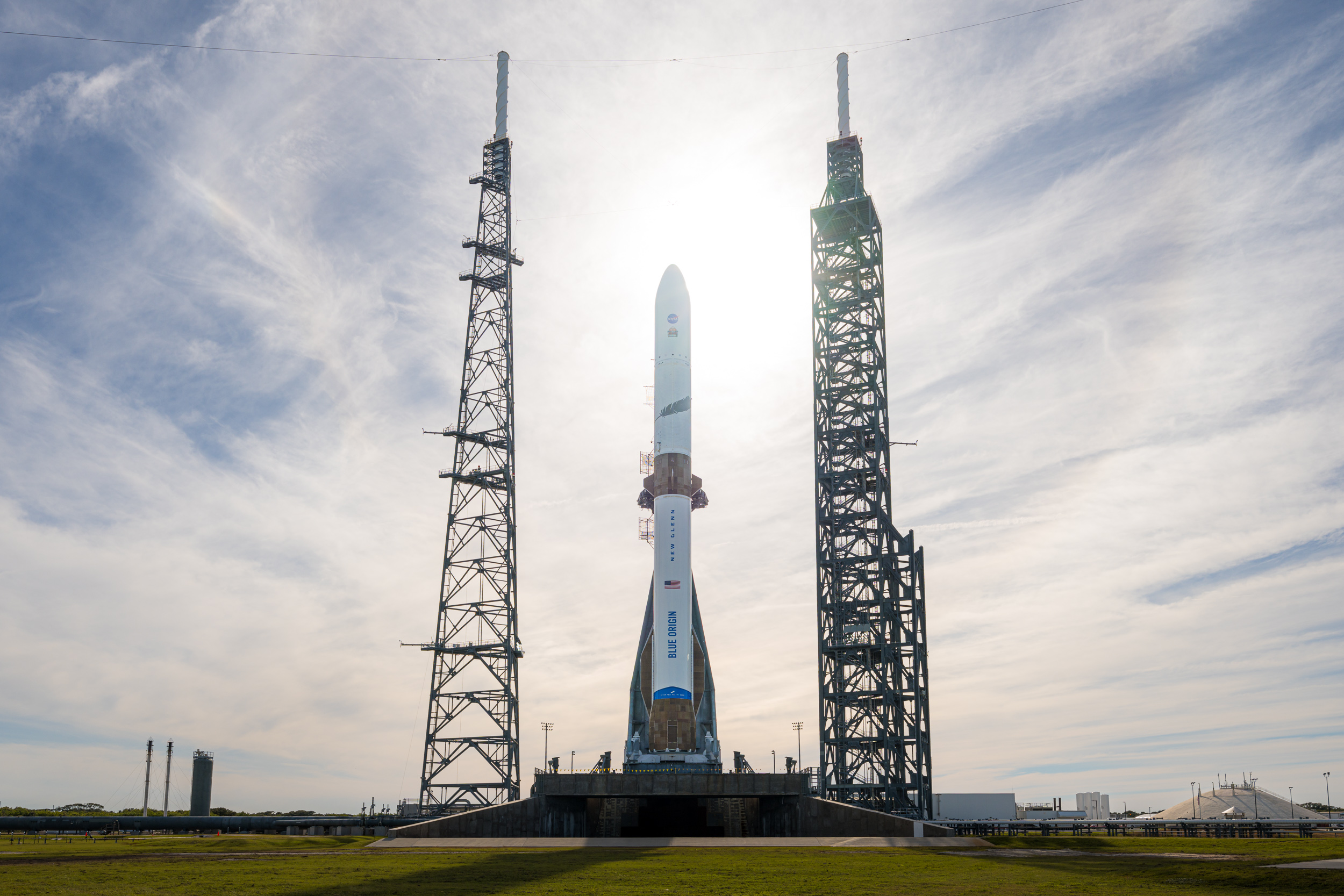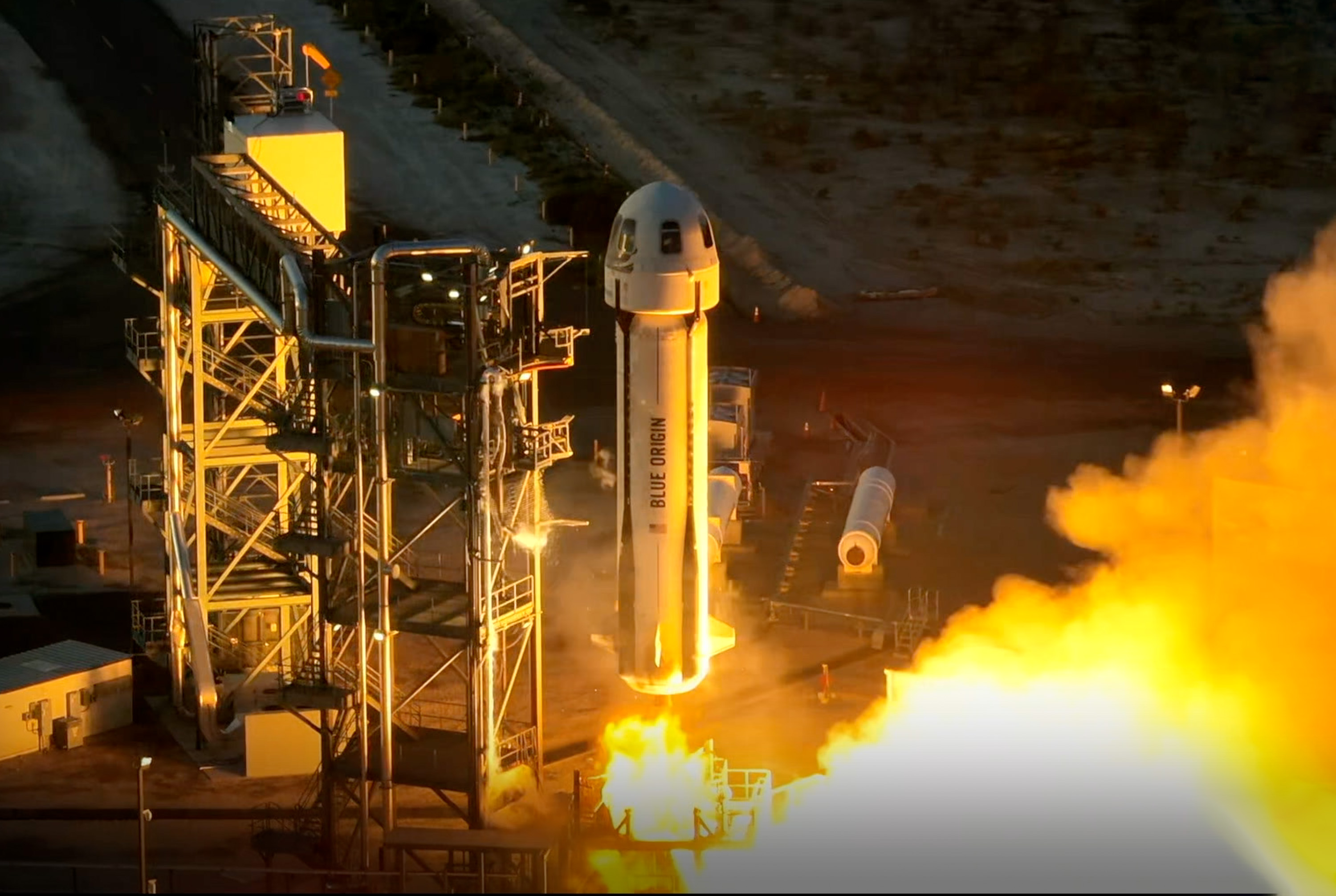Previous Spaceflight Launches
Filter by Agency, Locations or Vehicles
Show All LaunchesNew Glenn | EscaPADE
Blue Origin | United States of AmericaCape Canaveral SFS, FL, USA
Nov. 13, 2025, 8:55 p.m.
Status: Launch Successful
Mission:
Second flight of Blue Origin's New Glenn launch vehicle carrying the Escape and Plasma Acceleration and Dynamics Explorers (EscaPADE), a dual-spacecraft mission from University of California, Berkeley to study ion and sputtered escape from Mars. The spacecrafts' scientific goals are to understand the processes controlling the structure of Mars' hybrid magnetosphere and how it guides ion flows; understand how energy and momentum are transported from the solar wind through Mars' magnetosphere; and understand the processes controlling the flow of energy and matter into and out of the collisional atmosphere.
Mars Orbit GS1-SN002 - Maiden Flight JacklynNew Shepard | NS-36
Blue Origin | United States of AmericaCorn Ranch, Van Horn, TX, USA
Oct. 8, 2025, 1:40 p.m.
New Shepard | NS-35
Blue Origin | United States of AmericaCorn Ranch, Van Horn, TX, USA
Sept. 18, 2025, 1 p.m.
Status: Launch Successful
Mission:
NS-35 is the 35th flight for the New Shepard program. This flight will fly more than 40 scientific and research payloads to space and back, including 24 experiments from NASA’s TechRise Student Challenge and payloads for Johns Hopkins Applied Physics Laboratory, Oklahoma State University, University of Florida, Carthage College, University of Central Florida, Teledyne, Space Lab Technologies, and Teachers in Space, among others.
Suborbital NS-5 - Flight Proven ( ) Corn Ranch Landing Pad, West TexasNew Shepard | NS-34
Blue Origin | United States of AmericaCorn Ranch, Van Horn, TX, USA
Aug. 3, 2025, 12:42 p.m.
New Shepard | NS-33
Blue Origin | United States of AmericaCorn Ranch, Van Horn, TX, USA
June 29, 2025, 2:39 p.m.
New Shepard | NS-32
Blue Origin | United States of AmericaCorn Ranch, Van Horn, TX, USA
May 31, 2025, 1:39 p.m.
New Shepard | NS-31
Blue Origin | United States of AmericaCorn Ranch, Van Horn, TX, USA
April 14, 2025, 1:30 p.m.
New Shepard | NS-30
Blue Origin | United States of AmericaCorn Ranch, Van Horn, TX, USA
Feb. 25, 2025, 3:49 p.m.
New Shepard | NS-29
Blue Origin | United States of AmericaCorn Ranch, Van Horn, TX, USA
Feb. 4, 2025, 4 p.m.
Status: Launch Successful
Mission:
NS-29 will simulate the Moon’s gravity and fly 30 payloads, all but one of which is focused on testing lunar-related technologies. The payloads will experience at least two minutes of lunar gravity forces, a first for New Shepard and made possible in part through support from NASA. The flight will test six broad lunar technology areas: In-situ resource utilization, dust mitigation, advanced habitation systems, sensors and instrumentation, small spacecraft technologies, and entry descent and landing. Proving out these technologies at lower cost is another step toward Blue Origin’s mission to lower the cost of access to space for the benefit of Earth. It also enables NASA and other lunar surface technology providers to test innovations critical to achieving Artemis program goals and exploring the Moon’s surface. The New Shepard crew capsule is using its Reaction Control System (RCS) to spin up to approximately 11 revolutions per minute. This spin rate simulates one-sixth Earth gravity at the midpoint of the crew capsule lockers. In simulated lunar gravity, customers can accelerate their learning and technology readiness for lunar payloads at much lower cost.
Suborbital NS-5 - Flight Proven ( ) Corn Ranch Landing Pad, West TexasNew Glenn | Maiden Flight
Blue Origin | United States of AmericaCape Canaveral SFS, FL, USA
Jan. 16, 2025, 7:03 a.m.
Status: Launch Successful
Mission:
Maiden flight of the New Glenn launch vehicle. Will carry the prototype Blue Ring payload tug and payload hoisting platform, consisting of communications array, power systems, and a flight computer affixed to a secondary payload adapter ring, remaining attached to the 2nd stage. This launch will serve as New Glenn's first National Security Space Launch certification flight. Target orbit is 2400 x 19300 km at 30° inclination.
Medium Earth Orbit GS1-SN001 - Maiden Flight Jacklyn




